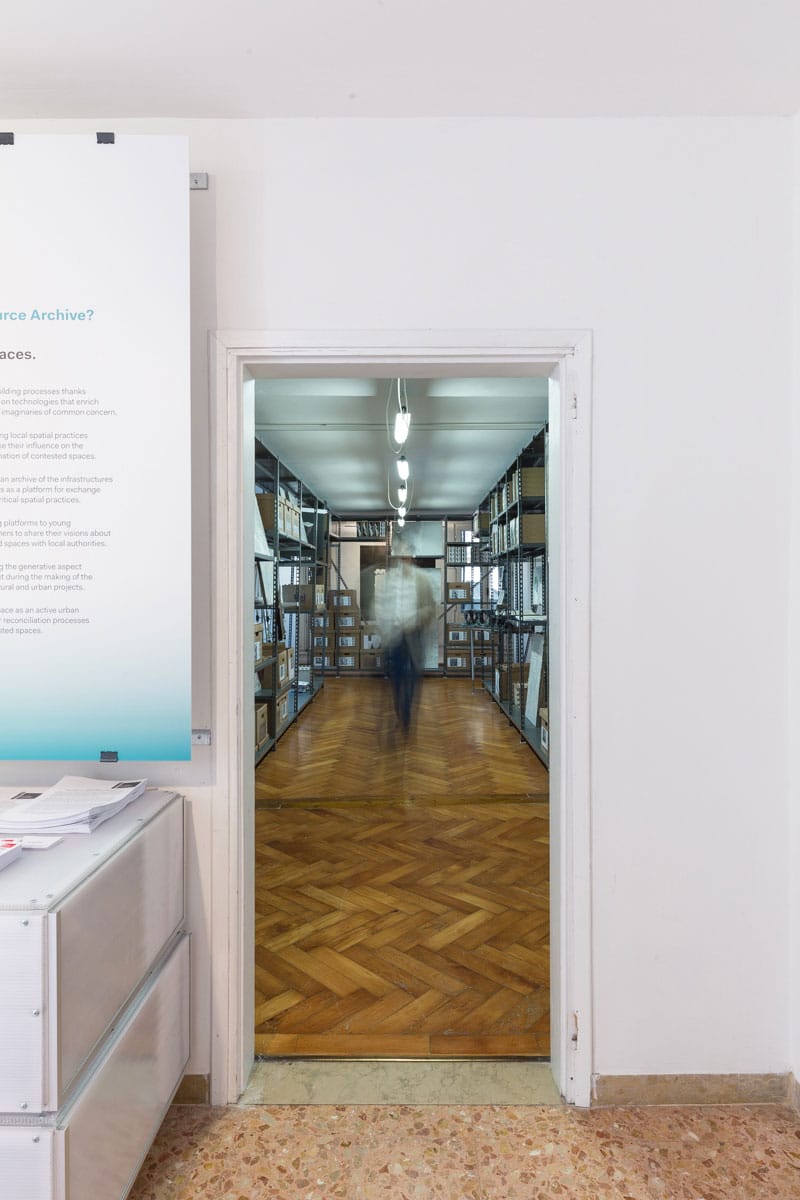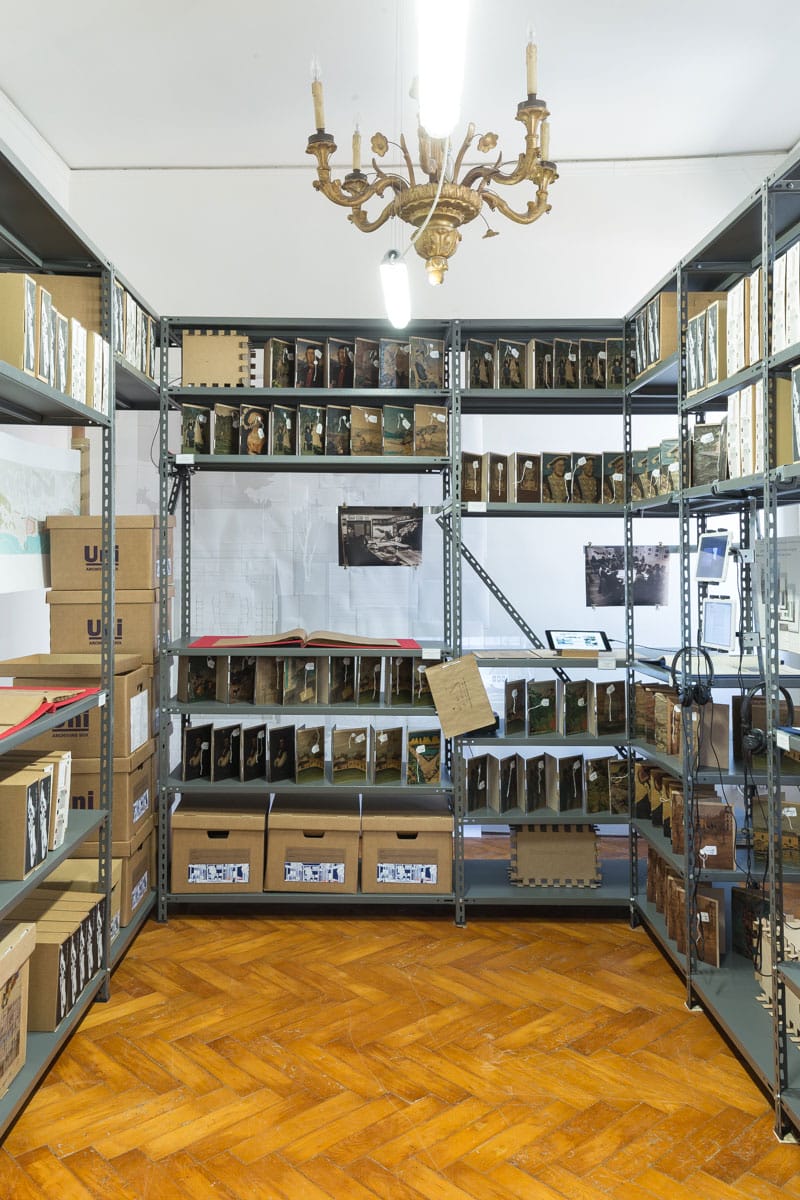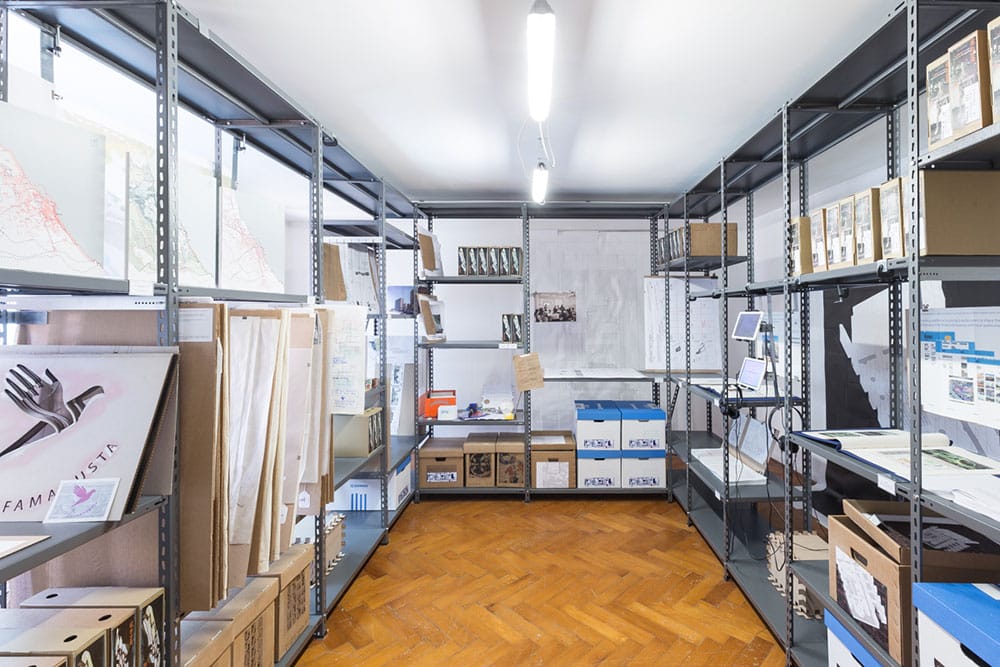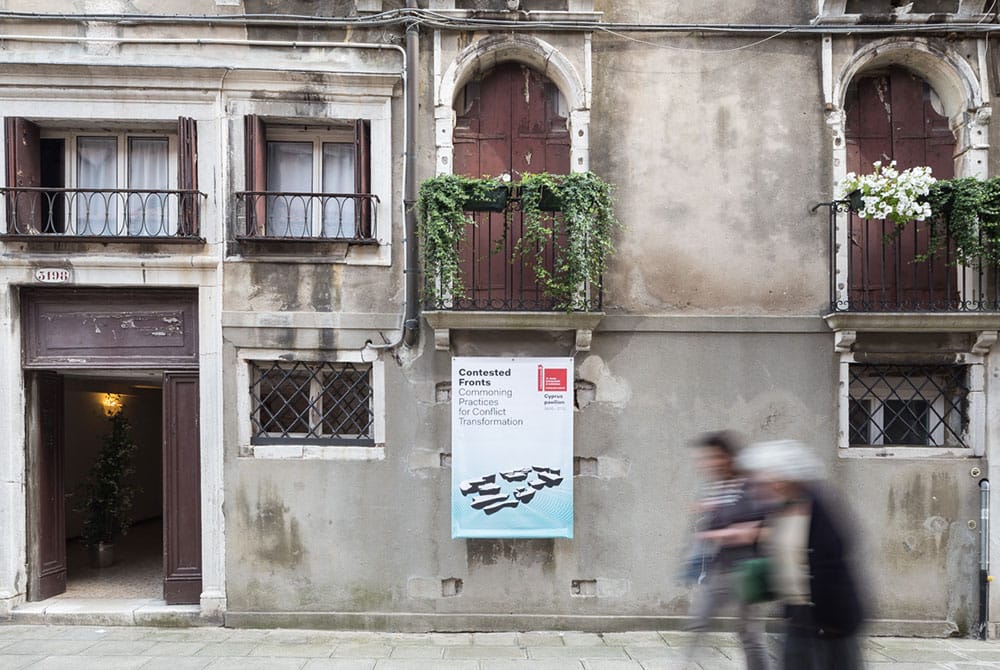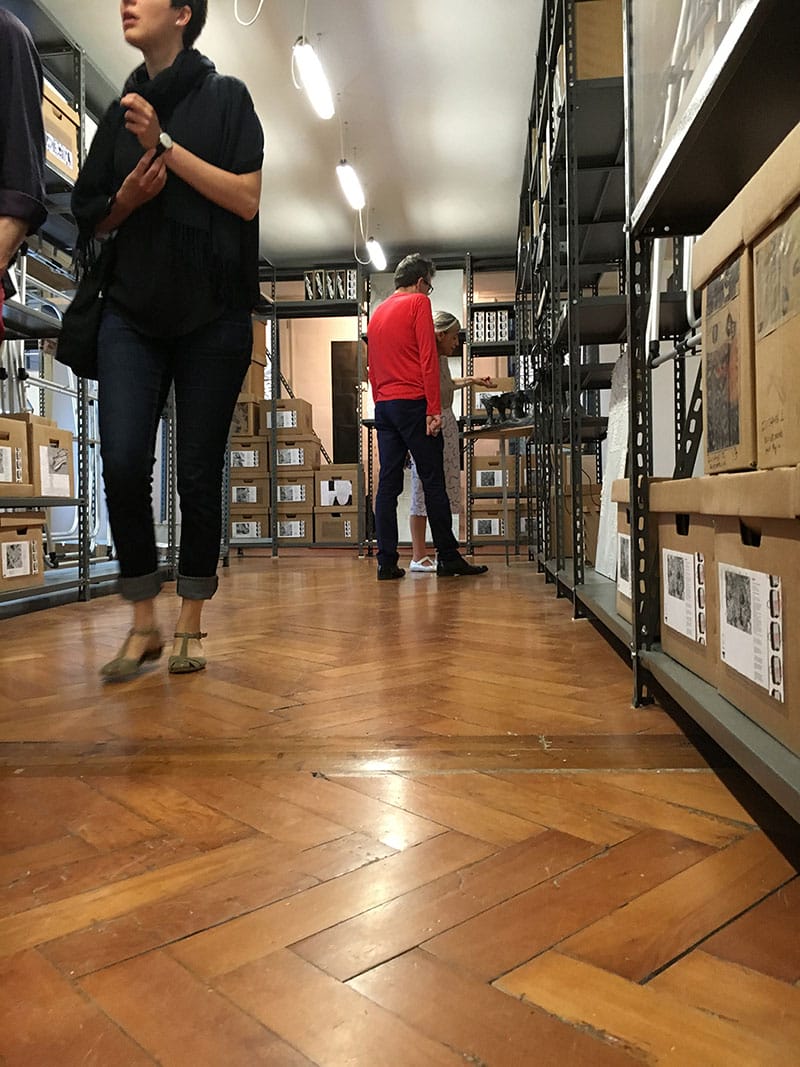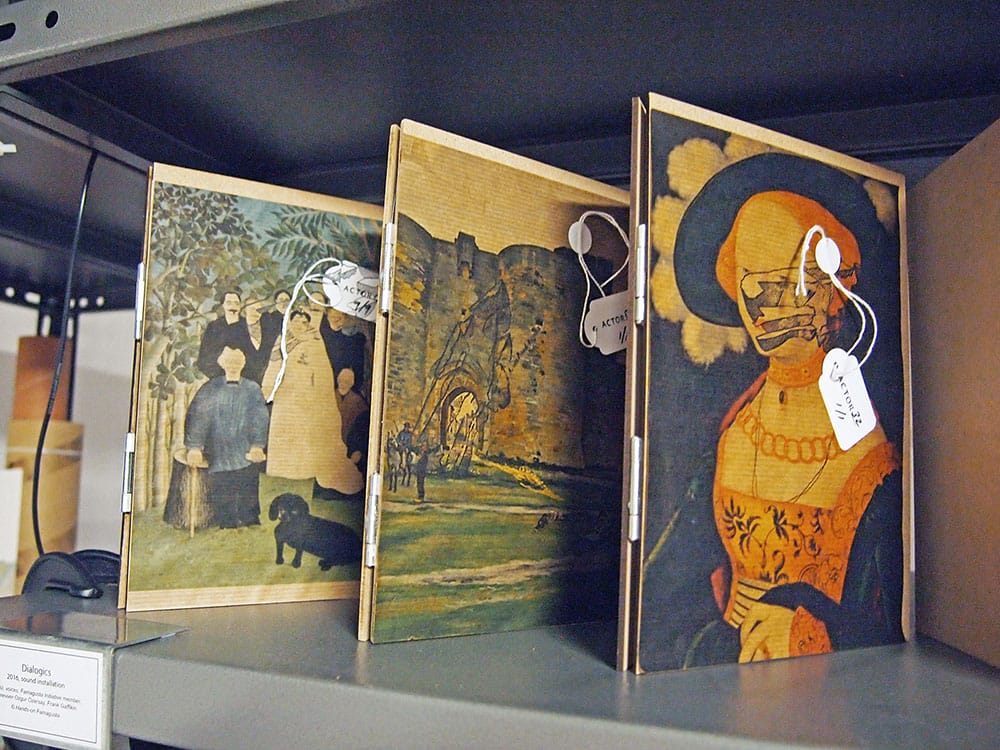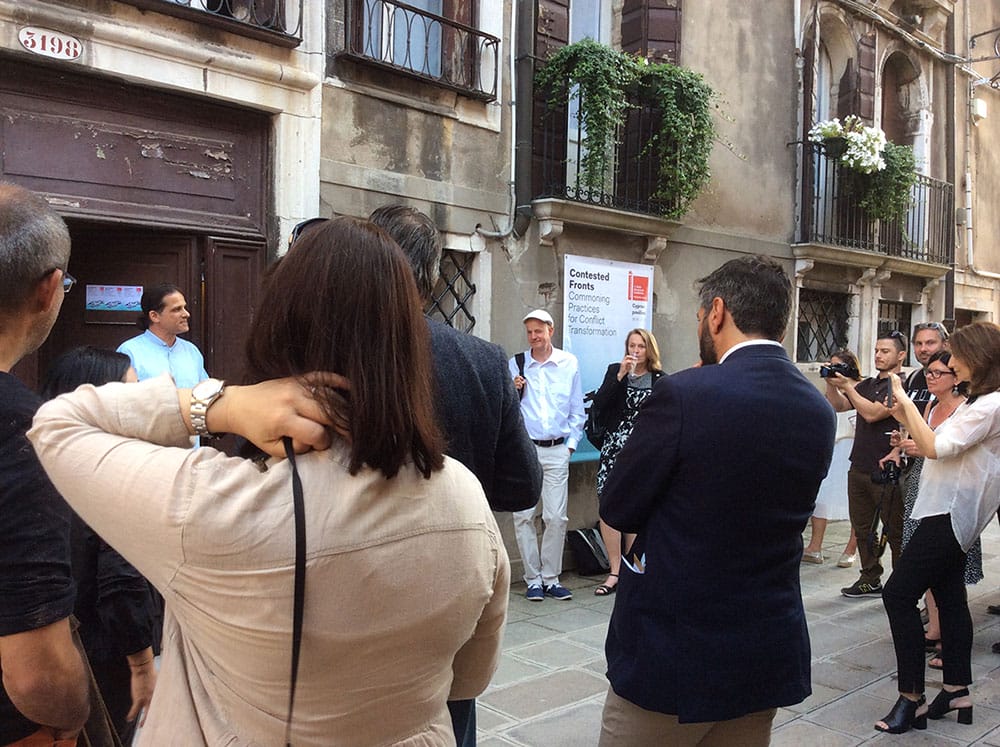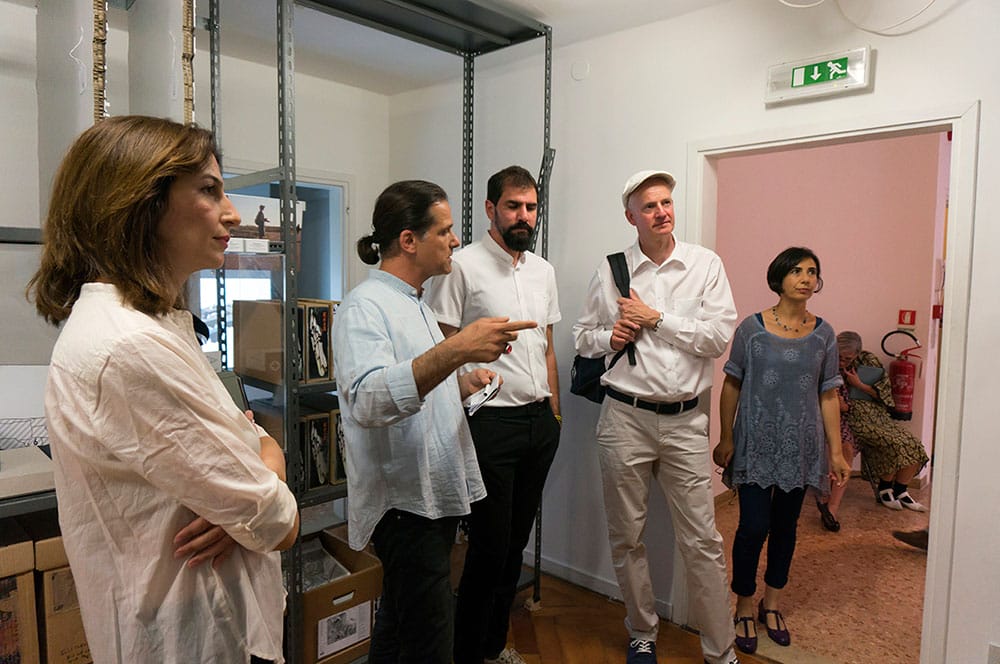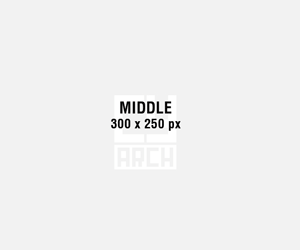“Contested Fronts: Commoning Practices for Conflict Transformation
Pavilion of Cyprus At the 15th International Architecture Exhibition – La Biennale di Venezia
Authors/Curators:
Socrates Stratis, Ph.D. Architect, Urbanist, Associate Professor, University of Cyprus.
Press Release
“Contested Fronts” is an exploration of the role of architecture in commoning practices in ethnically and socially contested spaces. It focuses on the agencies of the ad-hoc technologies of architecture that contribute to conflict transformation by advocating reconciliation processes to go hand in hand with urban reconstruction processes. “Contested Fronts” introduces three levels of investigation of the frontiers where architecture claims an active role: geopolitical, disciplinary, and everyday urban politics’ frontiers. To achieve this, it concentrates on the agencies of ad-hoc technology materiality and use that encourage the emergence of collectives, with their members coming from areas across divides. Ad-hoc technology involves means of spatial engagement, cartographic representation and visual communication. It assists the tactful organization of physical spaces and events.
“Contested Fronts” is an open source is built around the “Hands-on Famagusta” project, i.e. a collective platform for reconciliation through the creation of common urban imaginaries across the Cypriot divide. The “Contested Fronts Open Source Archive” includes international practices, networks, and pedagogical programs, which are complementary to the “Hands-on Famagusta” project, to build a decisive critical mass of resistance to the dominant trends of post conflict reconstruction. It addresses two major challenges emerging from the case of Famagusta: first, the operation in actually hostile environments where institutions produce narratives based on division; second, the confrontation of actual trends of post conflict reconstruction processes based either on large scale segregating private developments or on inflexible bureaucratic, non-transparent produced plans, both unable to encourage commoning practices or handle the ever changing contested urban environments.
The “Contested Fronts Open Source Archive” starts from Famagusta and not from Nicosia, well known for its divided status, because it could contribute to the prevention of Famagusta becoming the next divided city of Cyprus. Famagusta is a Cypriot coastal city, located on the eastern edge of the island, just north of the UN cease fire military zone, and east of one of the UK military bases on the island. Famagusta inhabitants are Greek Cypriots and Turkish Cypriots. However, since the 1974 war with Turkey the city has been deprived of its Greek Cypriot inhabitants who were displaced to the southern part of the island during the war. The Famagusta population was 38,960 inhabitants in 1973, of which 31,960 were Greek Cypriots and 7,000 Turkish Cypriots. The population in 2011 was 37,939 inhabitants consisting of Turkish Cypriots (some of them displaced from the south part of the island in 1974) and settlers from Turkey. Famagusta consists of all kinds of enclaves with the most notorious one being the Turkish army controlled ghost area of Famagusta. It is an abandoned urban area, located by a beautiful sandy shore, which used to house around 30,000 Greek Cypriots. A French/Venetian walled city is situated further north, very close to a university enclave.
There are indications that, in the framework of the Cyprus Federal State, the south part of the city will be under the Greek Cypriot territory and its north part will be under the Turkish Cypriot territory. Such scenario is part of the United Nations on-going negotiations between the two community leaders who strive for agreement and hopefully keeping Turkey out of the north part of the island, where it has had an overwhelming control since 1974. During the last couple of years, the “Hands-on Famagusta” project team has raised awareness on the Greek Cypriot and Turkish Cypriot Famagustians’ split mental maps that may lead to city partition. It has provided alternatives towards a unified city, influencing the on-going debate about the city future across the divide. The “Hands-on Famagusta” project is built on an interactive digital interface, (www.handsonfamagusta.org), roundtable workshops, and a transportable model of the city. The digital interface is an interactive web platform which hosts a smart archive that advocates the commons of a unified Famagusta by introducing a playful mode of designerly knowledge exchange. It introduces modes of reconciliation deep into potential urban reconstruction processes.
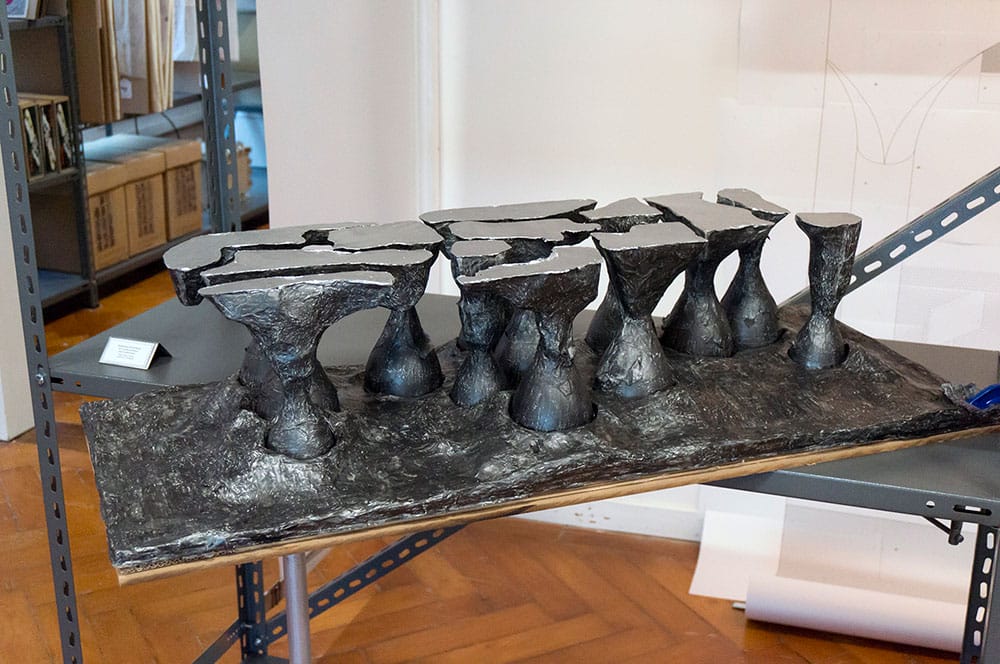
Contested Fronts-Counter Mapping- “Anatomy of Enclaves” 2016, model installation: pencil coated paper, by M. Loizidou- AA&U,_©photo by Thomas Mayer
The “Contested Fronts Open Source Archive” builds on the methodological approach of the “Hands-on Famagusta” project to make explicit three processes that are behind commoning practices for conflict transformation. The three processes are the organizing parts of the exhibition at Palazzo Malipiero, where the “Hands-on Famagusta” ad-hoc technology is both archived and exhibited, together with the work of the international participants. The first process is called “Counter-mapping”, involving the use of the mapping practice to problematize the civil society in regard to dominant, divisive, mental geographies. “Build-up” which is a peace-building collective, operating in conflict zones, inscribes in this process. In addition, “Archis Interventions SEE” enriches this process with a network of independent urban initiatives in South East Europe. The second process is entitled “Creating Thresholds”, which is about practices of exchange across edges, transforming limits to alive thresholds, encouraging the opening up of urban enclaves to the city commons. The work of the “Institute of Threshold” falls into this process, investigating the geopolitical architectures of bordering in the Middle East region. “Passages”, an action-research project dealing with small mobility spaces by launching competitions in architecture, design, and short movies, is also part of this process. The third process is called “Introducing Urban Controversies”, which has to do with the unfolding of the positive aspect of conflict within the making of the architectural and urban projects where the urban actors are in constant re-alliance and dispute. “Mapping Controversies”, a research and pedagogical program transposing Actors Networks Theory in Architecture, is also part of this section. Finally, “City Reparo”, which is a social enterprise that focuses on Belfast’s urban transformations, falls also into this process.
Text by Socrates Stratis
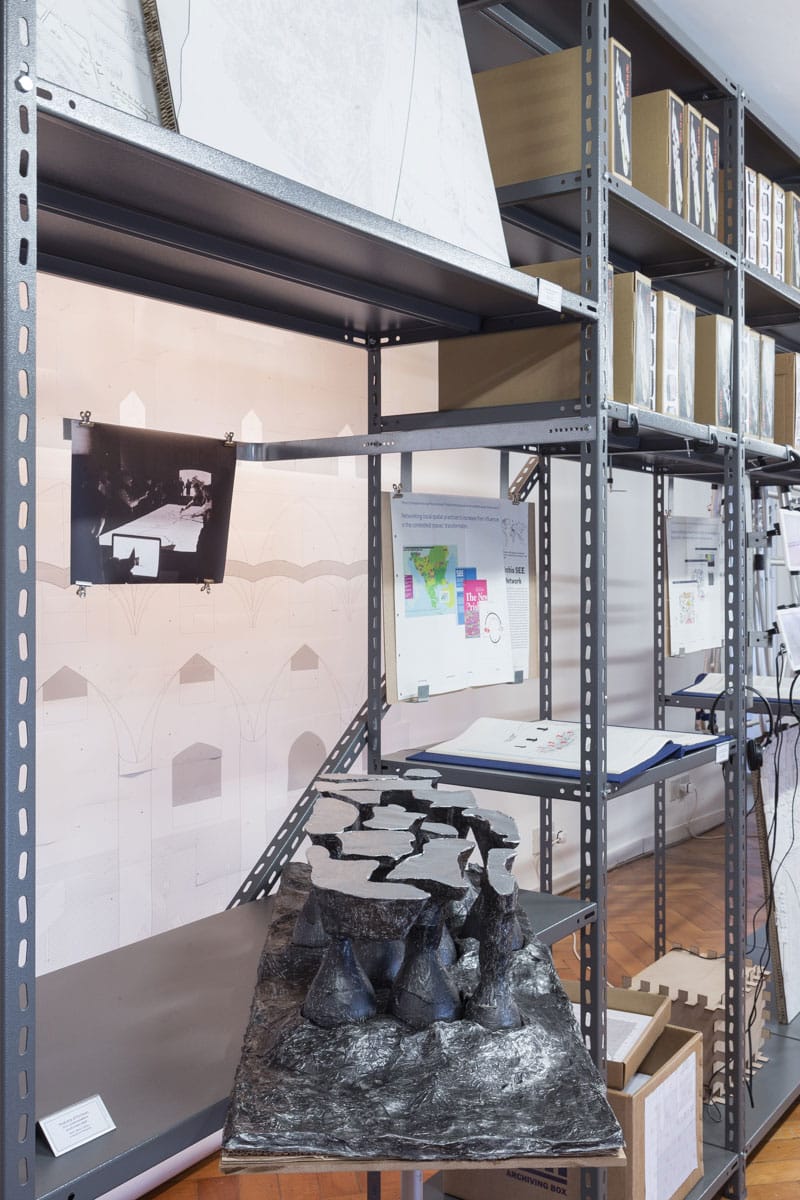
Contested Fronts Counter Mapping – “Anatomy of Enclaves” 2016, model installation “The Overwhelming Presence of a city model in St Peter & Paul Cathedral”, Famagusta 2015, assembled on the wall with A3 drawings, by AA&U, Chr. Constantinou, S. Stratis, © Hands-on Famagusta _ ©photo by DSL studio

Contested Fronts Counter Mappping – “Cartographic Practices in contested Famagusta”, 2014, © Hands-on Famagusta, “The Goethe Institute enclave UN buffer zone, Nicosia”, 2015, assembled on the wall with A3 drawings, by AA&U, Chr. Constantinou, S. Stratis, © Hands-on Famagusta _ ©photo by DSL studio

Contested Fronts- Creating Thresholds – “Passages” and “Institute of Threshold”, 2016, blue books, diagrams, video installations. “Workshop in St Peter & Paul Cathedral, Famagusta”, 2015, assembled on the wall with A3 drawings, by AA&U, Chr. Constantinou, S. Stratis, © Hands-on Famagusta_ ©photo by DSL studio

Contested Fronts- Creating Thresholds – “Push the Borders” and “Famagusta me Gusta”, E.U. 08 Game Series 2015, board and street games by E. Nicolaou, P. Franco, I. Demetriou, A. Panayiotou and P. Palomares, R. Christophi, E. Koufopavlou, E. Papallou © L.U2.CY _©photo by Thomas Mayer
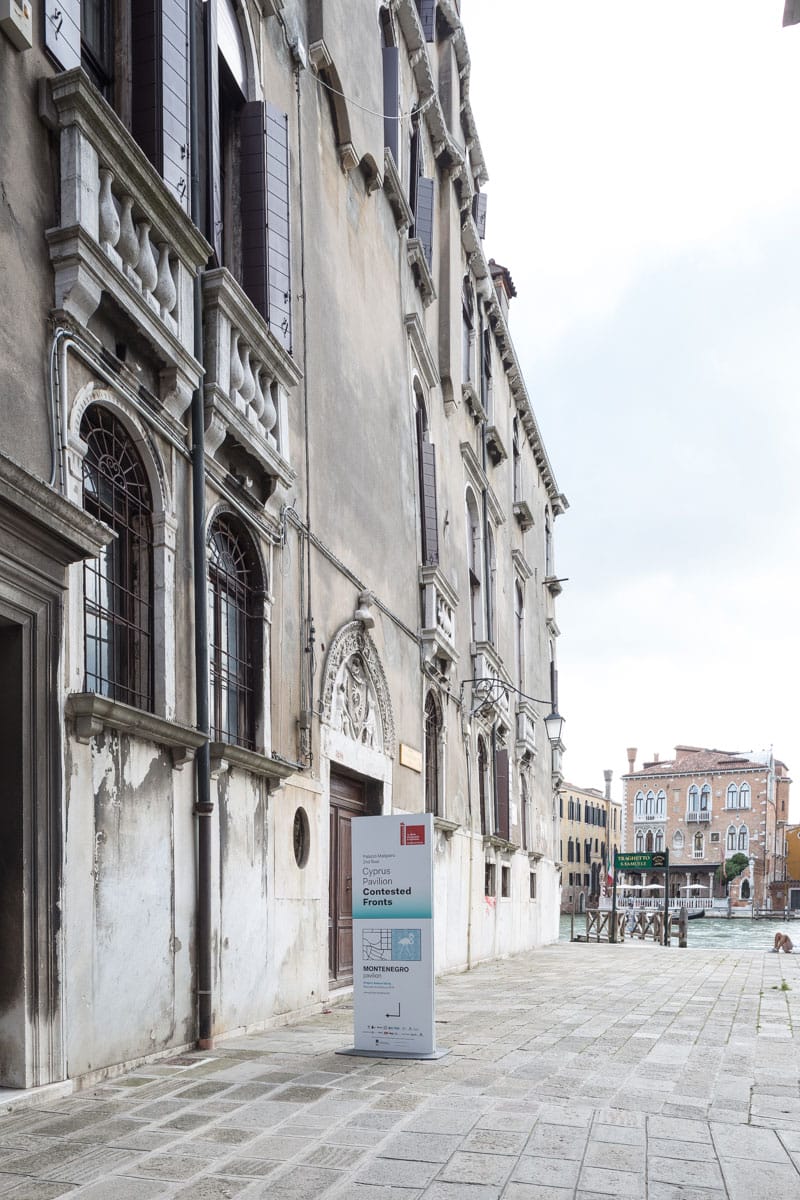
Contested Fronts Exhibition at Palazzo Malipiero next to Campo San Samuele and Palazzo Grassi_©photo by DSL studio

Contested Fronts Counter Mapping- Famagusta City Model_© Hands-on Famagusta -©Photo By Yves Sabourin
Commissioner: Petros Dimiotis, Ministry of Education and Culture, Deputy Commissioner: Hesperia Iliadou.
Curator: Socrates Stratis, Ph.D. Architect, Urbanist, Associate Professor, University of Cyprus.
Participants: “The Hands-on Famagusta” project by “AA&U for Architecture, Art and Urbanism”, “Imaginary Famagusta”, “Laboratory of Urbanism University of Cyprus” (L.U2.CY). International participants: “Archis Interventions SEE”, “Build Up”, “ City Reparo”, “Institute of Threshold”, “Mapping Controversies”, “Passages”.
Collaborators: “AA&U For Architecture, Art and Urbanism”, “Imaginary Famagusta”, “Laboratory of Urbanism, University of Cyprus” (L.U2.CY): Angeliki Koutsodimitropoulou – architect, visual communication designer, Chrysanthe Constantinou –architect, urban designer, Emre Akbil– architect, Senior Lecturer, Esra Can Akbil – architect, Senior Instructor, Maria Loizidou, visual artist, Munevver Ozgur – architect, Assistant Professor, Andreas Petrou – light design, Marina Constantinidou – film footage, Light Black – web development, Studio Folder – graphic design. Support: Lara Anna Scharf, Eleftheria Xerou, Bertug Ozarisoy, Nasia Pantelidou, Antigoni Chrysostomou, Cansu Denizhan, Anastasia Demetriou, Eleni Nicolaou, Elena Kapakiotou.
Organizers: Ministry of Education and Culture with Cyprus Architects Association
Sponsors: SEMHEK, Electricity Authority of Cyprus, Bank of Cyprus, Rotary Clubs of Famagusta and Nicosia-Salamina
Main Media Sponsors: Phileleftheros, Cyprus Weekly
Supporters: Chamber of Commerce and Industry of Famagusta, ClimaCare Engineering Ltd, Association of Graduates and Friends of Greek High Schools of Famagusta, Caramondani Desalination Plants Ltd, Waternet Ltd, Phanos Epiphaniou Ltd, Metaxas Compuplanet Ltd, Andreas & Alexandra Matsis, Eleftherios Montanios
Press Contact: Socrates Stratis, email: stratiss@ucy.ac.cy, tel. 0035799497807, 0035722665243 – Hesperia Iliadou email: hesperia.iliad@gmail.com, tel. 00393454131665 website: www.contestedfronts.org
Exhibition Space: Palazzo Malipiero, San Marco 3198 (Campo San Samuele) 30124 Venice
DOWNLOAD
Exhibition Leaflet digital version
Press Release Cyprus Contested Fronts-Greek
Press Release Cyprus Contested Fronts-Turkish





